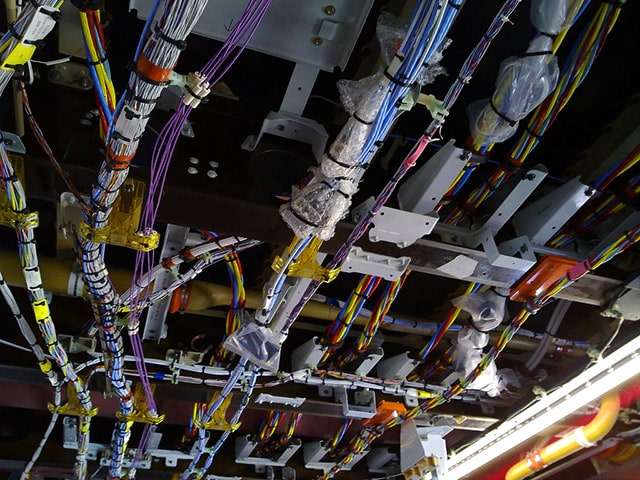MoM-EFIE Method Introduced for EMI Testing In Complex Cavities: Aircraft Environments
Creating standard methods to measure the Electromagnetic Interference on an aircraft’s environment has been compounded by the constant feed of improved personal electronic devices (PED’s) and the demand of aircraft passengers to fly with communication services similar to office-like conditions.
As the complexity of communication services that meets the needs of this business and social demand surges, the obligation of the aircraft’s equipment and security skyrockets. Electromagnetic Interference has been an element in aircraft manufacturing since the 1930’s, as brass conduit was shielding cables from electronic communication systems from magneto engines and reciprocating engines. The acoustic class of EMI is unsophisticated compared to current and future EMI testing requirements in aircraft’s.
The body of an airplane, the fuselage, starts out hollow and is widened to occupy a maximum number of passengers. Filling up the hollow fuselage is hundreds of passengers, each possessing one to multiple personal hand held devices. Passengers can bring a variety of PED devices on board, such as hand held scanners, mobile phones, laptop computers and game players. Each device omits signals in the 1 MHz range (unintentionally in most cases) affecting the performance of the aircraft’s avionic equipment.
Passengers sit only a few feet from critical wires and navigational cabling, which can be in amounts up to 150 miles of electrical wiring in a single commercial passenger jet. In addition to the close proximity of cables, the aluminum airframe itself can act as a phased array or resonant cavity, much like that of a satellite dish. Add antennas to the mix and you’ve got yourself resonances on electric and magnetic fields; picture a field of electric wildflowers reproducing as each radio wave is emitted. Shielding aviation equipment from this complex wave will take some ingenious methods.
The Finite Difference Time Domain (FTDT) and the Method of Moments (MoM) have been used to analyze the coupling effects, but the PED operating frequencies and the increasing size of the airplanes themselves have added to the need for other “faster” methods. These “fast-methods” like MLFMA, AIM, MLMDA, and ACA were developed to solve MoM’s electrically large object element in an efficient way. Working well for large electrical problems, these fast methods did show, in certain cases, failure to converge or slow convergence. A method is presented MoM-EFIE where any convergence problem is avoided along with a significant reduction of computational time. A new step by step algorithm has been exposed which is not as efficient on electrically-large models, but for intermediate size models that encounter a larger array of complex factors such as cavities, it proves to be most interesting… ( read more )
Article: “Interference Tech”
Editor: “Amy Jones”
Images: “JetBlue & Staticflickr”






